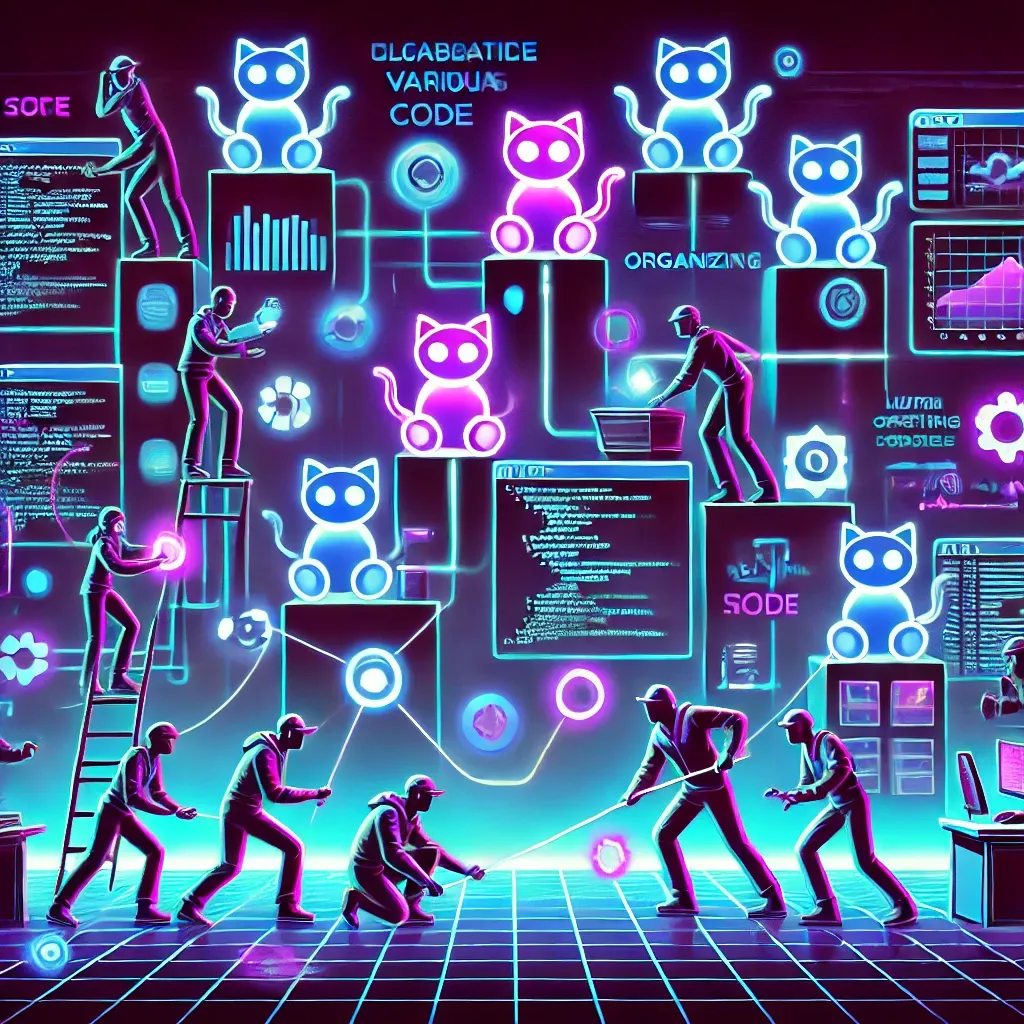Collaboration in DevOps: Building Bridges Between Development and Operations
Master DevOps success by focusing on collaboration over tools. Learn how trust, psychological safety, and empathy create bridges between development and operations teams.

After a decade of working with cross-functional technical teams, I've come to understand that the most potent aspect of DevOps isn't the tools or automation.
It's the fundamental shift in how people work together.
While CI/CD pipelines and infrastructure-as-code receive much attention, the cultural transformation at the heart of DevOps is what truly drives success.
Companies simplify DevOps to just a collection of technical practices.
DevOps, at its essence, is about breaking down traditional barriers between development and operations teams.
It's not something you can purchase or implement overnight.
It's a cultural movement that requires continuous nurturing.
As someone who has witnessed the transition from siloed teams to collaborative units, I've seen that true DevOps transformation happens when people start working differently.
The automation and tooling serve the collaboration, not the other way around.
When teams genuinely embrace collaborative DevOps practices, the results are remarkable.
Accelerated delivery cycles become the norm as handoff delays vanish and iteration speeds up.
One team I worked with cut their release time from weeks to days simply by removing the artificial barriers between their development and operations specialists.
Reduced system outages emerge naturally when teams implement collaborative monitoring and troubleshooting.
Instead of the traditional "throw it over the wall" approach, developers and operations specialists work together to build resilient systems from the start.
Innovation flourishes in environments where people feel safe proposing ideas and experimenting.
Risk-averse organizations transform into innovative powerhouses when they establish the right collaborative foundations.
Perhaps most significantly, job satisfaction improves.
People are happier when they're not trapped in blame cycles or hindered by communication barriers.
One shouldn't underestimate the human element of DevOps.
It's what makes the technical achievements sustainable.
Trust, psychological safety, and empathy are the foundation of all this.
Building effective DevOps collaboration using these elements can spark successful transformation efforts.
Trust is the operating system of collaboration.
It is the implicit belief that others will meet our expectations.
Without it, team members become protective, and productivity suffers. I've observed teams use different trust models depending on their circumstances:
- Swift trust works well for short-term teams, where trust is assumed from the start and verified through behavior.
- Trust, but verify provides a balanced approach for new teams, starting with cautious trust that strengthens as behaviors are verified.
The most successful DevOps transformations I've witnessed prioritized trust-building between historically adversarial teams.
Such trust requires leadership commitment and consistent reinforcement.
Team members also need freedom to speak and act, or in other words, an environment of psychological safety.
Google's research on high-performing teams identified psychological safety as the number one predictor of team effectiveness.
In DevOps environments, this means creating space where people feel safe to:
- Ask questions without fear of appearing incompetent
- Admit mistakes without expecting punishment
- Propose new ideas without fear of ridicule
Teams with strong psychological safety resolve incidents more quickly because they focus on solutions instead of avoiding blame.
They implement "ask cultures" where reaching out for help is encouraged, not penalized.
Things all fall apart without the empathy to understand different perspectives.
Empathy breaks patterns of resentment that often exist between development and operations teams.
It's the ability to understand the challenges others face.
When developers participate in on-call rotations, they gain empathy for the operational challenges their code creates.
When operations specialists join planning sessions, they provide valuable perspective that improves architectural decisions.
Trust, psychological safety, and empathy form the bedrock of effective DevOps collaboration.
Effective collaboration looks different at each stage of the software development lifecycle.
Here's what I've seen work well.
Discovery Phase: Shared Understanding
Collaboration often falls short in the discovery phase, leading to problems downstream.
True collaboration here means:
- Shared tools between departments to ensure transparency
- Including implementers in scheduling decisions for realistic timelines
- Using familiar language, such as user stories, to bridge the technical and business understanding
One pattern I've consistently seen fail is when product teams work in isolation and "throw requirements over the wall" to engineering.
Instead, successful teams create joint discovery processes where all perspectives are valued.
Development Phase: Working in the Open
Collaborative development starts with transparency through practices like:
- Unified version control that everyone can access and understand
- Innersource practices that encourage contributions across team boundaries
- A testing strategy with shared testing patterns
Teams that excel at collaborative development maintain a single continuous integration platform across the organization, making it easier for anyone to understand the status of any project.
Deployment and Production: Collective Responsibility
The moment of truth for DevOps collaboration comes during deployment and production support:
- Visible deployments announced through shared channels eliminate surprises
- Sustainable on-call rotations distribute the burden fairly
- Collaborative incident management focuses on learning, not blaming
I've seen teams transform their approach to incidents by implementing blameless postmortems.
The key is to create a timeline of what happened and explore why certain decisions made sense at the time, rather than judging with a hindsight bias.
Overcoming Collaboration Challenges
Building a collaborative culture isn't easy.
Resistance to change comes from those who are comfortable with existing workflows.
Communication gaps exist between teams with different technical languages.
Siloed organizational structures can discourage cross-functional work.
Misguided organizations treat DevOps as a checklist rather than a cultural transformation.
I've found that successful organizations address these challenges by:
- Securing genuine leadership buy-in (not just lip service)
- Investing in shared communication platforms and collaboration tools
- Implementing cross-functional teams with shared ownership
- Creating learning opportunities through cross-training and knowledge sharing
- Celebrating successes while treating failures as learning opportunities
While the human aspects of collaboration can seem intangible, they produce measurable results.
Here are a few:
- Increased deployment frequency
- Reduced lead time for changes
- Faster mean time to recovery
- Lower rate of change failures
These metrics, popularized by the DORA research program, provide concrete evidence that collaborative cultures deliver better technical outcomes.
Creating a thriving DevOps culture requires continued attention and care.
The tools and technologies will change, but the principles of effective collaboration remain constant.
I've seen organizations make dramatic improvements by focusing on the human elements of DevOps.
They create environments where people can work together best by emphasizing trust, psychological safety, and empathy.
The DevOps journey never truly ends.
It's a continuous process of improvement, learning, and adaptation.
But the destination, a collaborative culture that delivers value quickly and reliably, is worth the effort.
As you embark on your DevOps transformation, remember that your most powerful tool isn't a new CI/CD platform or infrastructure automation script.
You can build bridges between people and create an environment where collaboration flourishes.




